Tibet University is located in Lhasa, the capital of the Tibet Autonomous Region. It is the first comprehensive university founded by New China on the snowy plateau. It is a university with glorious traditions and a glorious history. It is the only national "211 Project" key construction university in the Tibet Autonomous Region, a "double first-class" construction university, and a ministry-region joint construction university. The history of the school can be traced back to the Tibetan cadre training class founded by the Chinese People's Liberation Army troops entering Tibet in 1951. It has gone through the development stages of the Tibet Military Region Cadre School, the Tibet Local Cadre School, and the Tibet Administrative Cadre School. In 1965 and 1975, the school was upgraded to the Tibet Normal School and the Tibet Normal College, which pioneered the teacher education in Tibet. In 1985, it was officially renamed Tibet University with the approval of the Ministry of Education. In 1993, the Tibetan Medical College of Tibet University was independently established as the Tibet Tibetan Medical College (now Tibet University of Tibetan Medicine). Since 1999, the Tibet Autonomous Region Art School, the Tibet Medical College, the Medical Department of the Tibet Nationalities College, and the Tibet Autonomous Region Finance and Economics School have been successively incorporated into Tibet University. In 2013, it was included in the "Revitalization Plan for Higher Education in Central and Western China", in 2017 it was selected as a university in the first round of "Double First-Class" discipline construction, in 2018 it became a university jointly built by the Ministry of Education and the People's Government of the Tibet Autonomous Region, and in 2022 it was selected as a university in the second round of "Double First-Class" construction. After more than 70 years of construction and development, the school has become a comprehensive university with the characteristics of plateau frontier ethnic regions. The school has Najin Campus, Hebalin Campus, Norbulingka Medical College Campus, and Norbulingka Finance and Economics College Campus, covering an area of more than 1,400 acres and a construction area of 470,700 square meters. The Education City Campus is under planning and construction. There are 14 colleges, including the College of Arts, College of Science, College of Engineering, College of Medicine, College of Art, College of Economics and Management, College of Foreign Languages, College of Political Science and Law, College of Education, College of Finance and Economics, College of Information Science and Technology, College of Marxism, College of Ecology and Environment, and Institute of Chinese Community. The total value of teaching and scientific research instruments and equipment is 614 million yuan. There are 1.2045 million paper books, 601,000 electronic books, and 5,800 Tibetan and Sanskrit books. The school has a collection of Tibetan manuscripts of the 10th to 13th centuries, the Great Prajnaparamita Sutra and the Great Prajnaparamita Sutra 25,000 Verses, which were selected into the third and fifth batches of the National List of Precious Ancient Books. The Selected Photocopy of the "Puri Documents" was listed as an important achievement of the 40th anniversary of reform and opening up by the China Tibetology Research Center. There are 1,158 full-time faculty members, including 844 full-time teachers and other teachers. Among the full-time teachers and other teachers, 385 have senior professional titles, accounting for 46%; 667 have postgraduate degrees, accounting for 79%. There are 70 high-level talents, including 47 national high-level talents, including 1 academician of the Chinese Academy of Engineering, and 23 autonomous region-level high-level talents. The school has 2.There are more than 20,000 people, including 380 doctoral students, 2,481 master's students, 10,476 undergraduates, 29 junior college students, and 8,649 adult students of various types. The school has three first-level doctoral degree authorization points in ethnology, Chinese language and literature, and ecology, 19 first-level master's degree authorization points and 16 professional master's degree authorization points. There are two postdoctoral research mobile stations in ethnology and ecology. There are two national key disciplines in ecology and Chinese language and literature (Tibetan language and literature), and 14 autonomous region-level key disciplines. Among them, ecology has been selected as a "double first-class" construction discipline. In 2023, the engineering discipline entered the top 1% of the ESI global ranking. Seven disciplines, including ethnology, education, Chinese language and literature, ecology, computer science and technology, environmental science and engineering, and music and dance, were listed in the 2023 China's best discipline rankings. The school has 52 undergraduate majors, covering 10 disciplines including economics, law, education, literature, history, science, engineering, medicine, management and art. There are 20 national first-class undergraduate professional construction sites and 5 autonomous region first-class undergraduate professional construction sites. There are 5 national first-class undergraduate courses and 19 autonomous region first-class undergraduate courses. "Marxist Motherland, Nationality, Religion, Culture and Education" is a national quality course, and "Human Resource Management" is a national bilingual teaching demonstration course. There are 20 autonomous region quality courses. There are 2 national teaching teams in Tibetan language and literature, computer and Tibetan information technology, and 6 autonomous region teaching teams. There are two "National Huang Danian-style Teacher Teams" in the ecology teacher team and the border security information transmission and processing teacher team, and 1 national outstanding engineer team. There are 4 national characteristic majors in mathematics and applied mathematics, clinical medicine, musicology, and fine arts, and 5 autonomous region characteristic majors. There is 1 national experimental teaching demonstration center for "Information Technology Experiment" and 1 national off-campus practice education base for college students. There are 13 members of the Higher Education Teaching Steering Committee of the Ministry of Education. In recent years, as the leading unit, the university has won three national teaching achievement awards, including "Overall promotion of Marxist "Four Views" education to cultivate "reliable" high-quality talents", "Exploration and practice of computer and Tibetan information processing talent training system", and "Innovation and practice of the training model of postgraduates in ecological environment in border ethnic areas under the guidance of ideological and political education, and coordinated aid and training", and 35 autonomous region-level teaching achievement awards. It has undertaken one national excellent doctor education and training program project, three national new engineering research and practice projects, one national new liberal arts research and reform practice project, one national professional comprehensive reform pilot project, and four autonomous region professional comprehensive reform pilot projects. It was selected as one of the "first batch of national demonstration universities for innovation and entrepreneurship education". The university has the National Terrestrial Ecosystem Positioning Observation and Research Station of Yani Wetland in Tibet, the National Field Scientific Observation and Research Station of Alpine Grassland Ecosystem in Nagqu, Tibet, the National Field Scientific Observation and Research Station of Cosmic Rays in Yangbajing, Tibet, the National Field Scientific Observation and Research Station of Special Atmospheric Processes and Environmental Changes in Mount Everest, Tibet, the National Field Scientific Observation and Research Station of Alpine Lakes and Environment in Nam Co, Tibet, the Ministry of Education Field Scientific Observation and Research Station of Geological Hazards in Bomi, the Ministry of Education Field Scientific Observation and Research Station of Ecological Environment in Nagqu, the Ministry of Education Key Laboratory of Cosmic Rays, the Ministry of Education Key Laboratory of Biodiversity and Ecological Environment Protection in the Qinghai-Tibet Plateau, the Ministry of Education Engineering Research Center for Tibetan Information Technology, the Ministry of Education Demonstration Base for the Training of Innovative Talents in Tibetan Information Technology, the National and Local Joint Engineering Research Center for Tibetan Information Technology (Tibet), and the Academician Expert Workstation for Plateau Ecological Environment and Health. There are 5 autonomous region key laboratories, 2 autonomous region engineering research centers, and 11 autonomous region university key laboratories. The university has one research base for strengthening the consciousness of the Chinese nation community by the Central United Front Work Department, the Central Propaganda Department, the Ministry of Education, and the State Ethnic Affairs Commission, one base for Chinese literary and art criticism (Tibet University), one research base for the Chinese nation community by the State Ethnic Affairs Commission, one fourth batch of technology and innovation support centers (TISC), one "Belt and Road" country and regional research center of the State Ethnic Affairs Commission, one filing center for country and regional research in colleges and universities of the Ministry of Education, and one national language and writing promotion base of the Ministry of Education. There are three collaborative innovation centers jointly built by the Ministry of Education and the Tibet Autonomous Region, including the Collaborative Innovation Center for the Social and Economic Development of Ethnic Minorities in China, the Collaborative Innovation Center for the Informationization of Tibet, and the Collaborative Innovation Center for Human Activities and Regional Development in the Himalayas. There is one research base for strengthening the consciousness of the Chinese nation community in the autonomous region, and one research base for philosophy and social sciences in colleges and universities in the autonomous region. In the past five years, the school has been approved for more than 830 scientific research projects at the provincial and ministerial levels, including one major project of the National Science and Technology Innovation 2030, two major projects of the National Social Science Fund, one major project of the team of unpopular and unique talents, four national key R&D plan projects, and two major projects of the first batch of science and technology projects of the autonomous region, with a research funding of more than 400 million yuan. It has won 8 awards of the Fifth China Tibetology Research Everest Award, 24 awards of the Autonomous Region Science and Technology Award, 1 "Outstanding Contribution Award for Cyber Security" of the National Internet Development Foundation, and 13 awards of the first Autonomous Region Philosophy and Social Science Outstanding Achievements. One teacher won the Third National Innovation Award. "Journal of Tibet University (Social Science Edition)" and "Journal of Tibet University (Tibetan Edition)" were selected as source journals of the Chinese Social Science Citation Index (CSSCI), and "Highland Science Research" was selected into the Chinese Science Citation Database (CSCD). The Ministry of Education has successively established counterpart support and cooperative construction university teams with Peking University as the leader, Wuhan University and Southwest Jiaotong University as deputy leaders, and Central University of Finance and Economics, Sichuan University, South China Normal University, Renmin University of China, Fudan University, Sun Yat-sen University, Lanzhou University, Jilin University and other universities as member units, and carried out multi-level, wide-ranging and all-round support and cooperation work, which has injected strong impetus into the construction and development of the school. The school attaches great importance to foreign exchanges and cooperation, and has established good inter-school cooperation relations with more than a dozen universities in Norway, Japan, Germany, Nepal, France and other countries and many domestic universities and research institutes. It has established long-term strategic cooperation relations with more than ten well-known domestic universities such as Tianjin University, Donghua University, Southwestern University of Finance and Economics, Shanxi University of Finance and Economics, Wuhan University of Technology, Chengdu University of Technology, Beijing University of Science and Technology, Southeast University, Beijing Foreign Studies University, Shandong University and so on. Over the past 70 years, the university has promoted the Tibetan spirit of "unity, patriotism, selfless dedication, hard work, and striving for excellence", and has explored a successful path to establish modern higher education in special plateau and frontier ethnic areas, forming a distinctive feature of talent training that is "reliable, useful, retainable, and well-performing". It has trained more than 80,000 full-time professionals at all levels and types, providing important talent and scientific and technological support for the economic and social development of Tibet and Southwest my country, and becoming an important base for Tibet's innovative talent training, scientific research and achievement transformation, high-level decision-making consultation, and national cultural inheritance and innovation, as well as an important window for opening up and exchanges. Looking into the future, the university will adhere to the guidance of Xi Jinping Thought on Socialism with Chinese Characteristics for a New Era, conscientiously implement General Secretary Xi Jinping’s important instructions on Tibet work and education work and the Party’s Tibet governance strategy in the new era, bear in mind General Secretary Xi Jinping’s earnest trust that “running Tibet University well is of great fundamental and strategic significance for building a new socialist Tibet” and the spirit of General Secretary Xi Jinping’s important reply to the students of the School of Medicine of Tibet University, fully implement the Party’s education policy, strengthen the Party’s overall leadership, firmly adhere to the correct direction of running the school, implement the fundamental task of cultivating morality and educating people, vigorously carry forward the “Old Tibet Spirit”, seize the major historical opportunities of the joint construction of the ministry and the region and the construction of “Double First-Class”, and establish With its feet on Tibet and facing the whole country, it has condensed the two distinctive subject areas of "plateau science and technology" and "excellent national culture". Its purpose of running a school is to serve the major strategic needs of the country and the local area and inherit and promote the excellent national culture. It adheres to the school-running idea of "establishing a school with characteristics, developing a school with quality, strengthening a school with talents, and striving to be first-class", improves the ability and level of talent training, scientific research, social services, cultural inheritance and innovation, and international exchanges and cooperation, and strives to build the school into a "double first-class" university with distinctive characteristics, domestic influence, and international reputation as soon as possible, and strives to comprehensively build a new socialist modern Tibet and write a Tibetan chapter that comprehensively promotes the great rejuvenation of the Chinese nation with Chinese-style modernization.
-

Tsinghua University
-

Peking University
-

Fudan University
-

Wuhan University
-

Zhejiang University
-

Nanjing University
-

Sun Yat-sen University
-

Tongji University
-

Renmin University of China
-

Jahrom University of Medical Sciences
-

Mesoamerican University
-

Istmo University
-
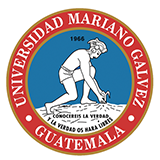
Mariano Galvez University of Guatemala
-
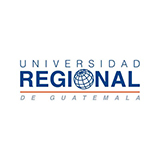
Regional University of Guatemala
-
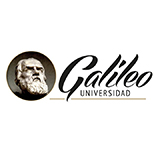
Galileo University
-

Francisco Marroquín University
-

Rafael Landívar University
-
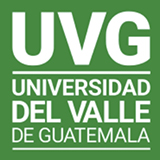
University of the Valley of Guatemala
-
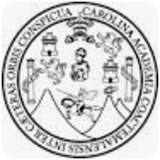
University of San Carlos of Guatemala
-

Technological Institute of Tlaxcala Plateau
-

Golfo University
-
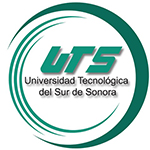
Technological University of South Sonora
-
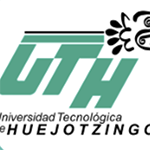
Technological University of Huejotzingo
-
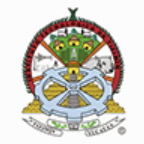
Tizimín Institute of Technology
-

Chilpancingo Institute of Technology

